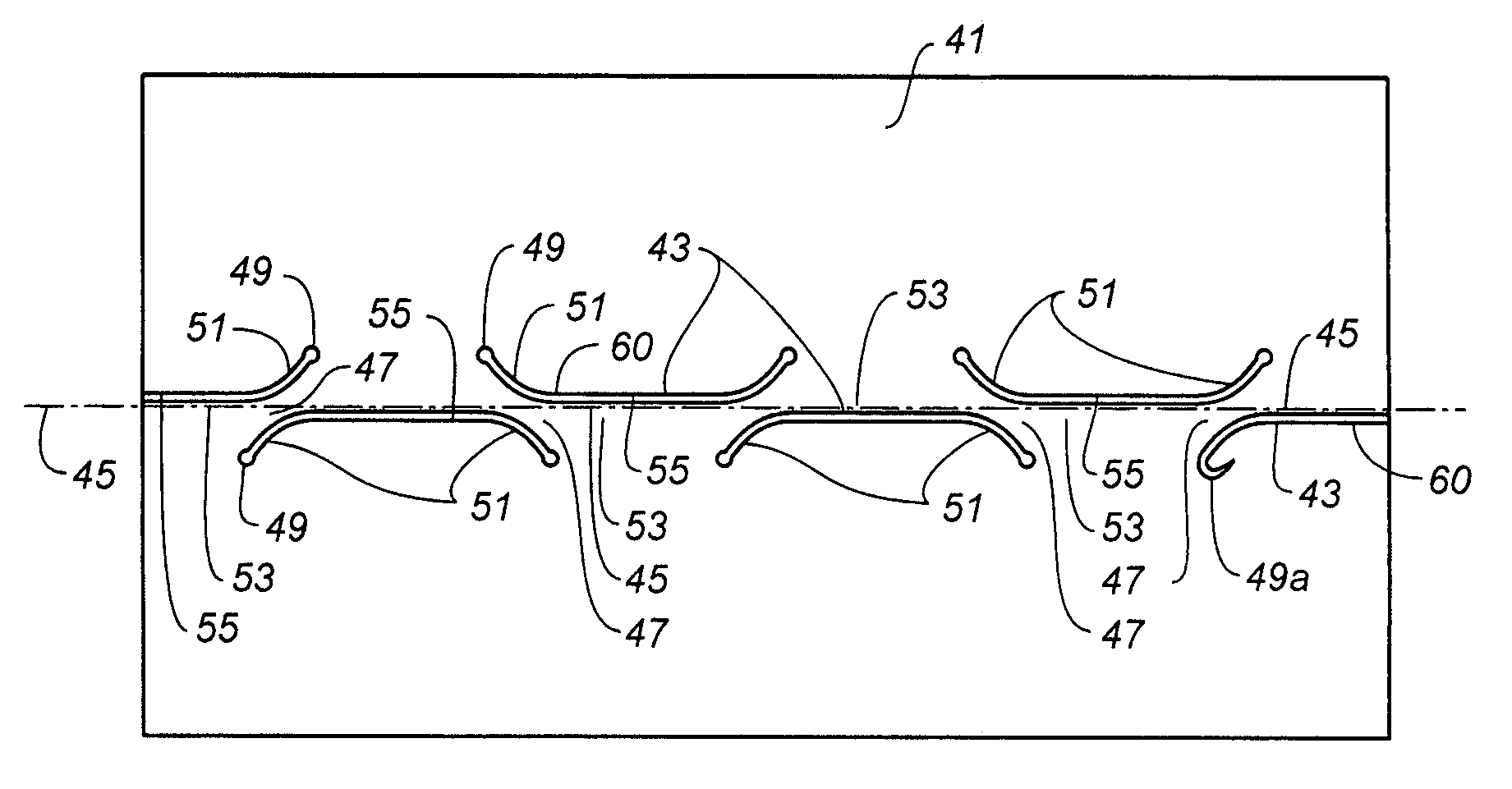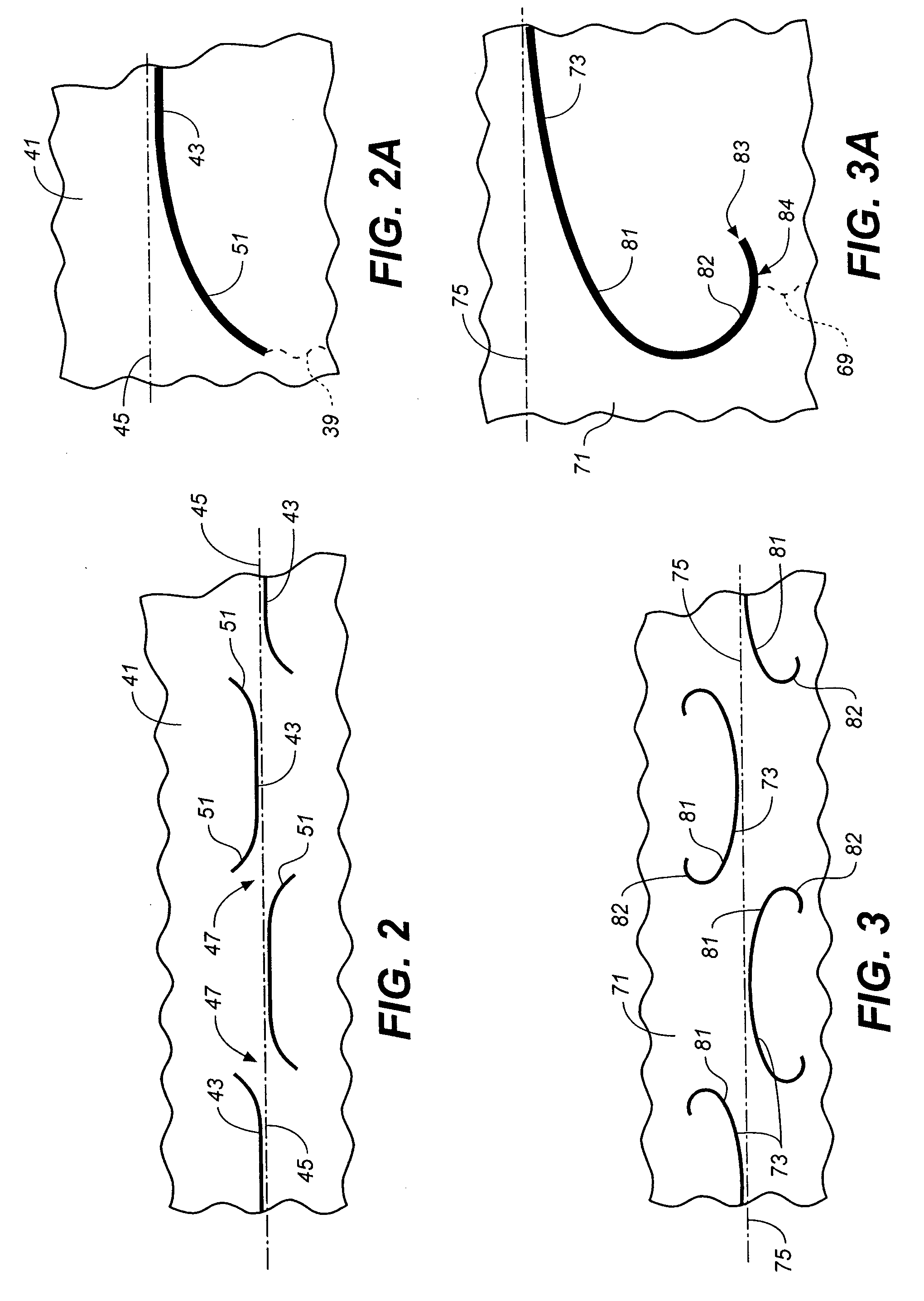Fatigue-resistance sheet slitting method and resulting sheet
- Summary
- Abstract
- Description
- Claims
- Application Information
AI Technical Summary
Benefits of technology
Problems solved by technology
Method used
Image
Examples
examples
[0060]FIG. 6 schematically illustrates a box beam as positioned on a fatigue test stand. The box beams tested each had a square cross-section with a dimension of 4 inches on each side and included a flange 132 which was folded inside one of the sidewalls and secured thereto by fastener assemblies 133, in this case a bolt and nut. The fasteners were placed every 4 inches along the length of the beam, and beam 131 had an overall length of 48 inches. A support assembly 135 was provided proximate each end of beam 131, and forced distributing plates 137 used to avoid local concentrations of stress at support stands 135.
[0061] Beam 131 was loaded at two locations 139 on either side of the center of the beam. The loads were spaced from each other by a distance of approximately 6 inches. Again, load distributing plates were employed at 139, and arrows 141 schematically illustrate that the beam was loaded from a minimum load up to a maximum load. Loading was cycled between minimum and maxim...
PUM
| Property | Measurement | Unit |
|---|---|---|
| Fraction | aaaaa | aaaaa |
| Length | aaaaa | aaaaa |
| Thickness | aaaaa | aaaaa |
Abstract
Description
Claims
Application Information
 Login to View More
Login to View More - R&D
- Intellectual Property
- Life Sciences
- Materials
- Tech Scout
- Unparalleled Data Quality
- Higher Quality Content
- 60% Fewer Hallucinations
Browse by: Latest US Patents, China's latest patents, Technical Efficacy Thesaurus, Application Domain, Technology Topic, Popular Technical Reports.
© 2025 PatSnap. All rights reserved.Legal|Privacy policy|Modern Slavery Act Transparency Statement|Sitemap|About US| Contact US: help@patsnap.com



